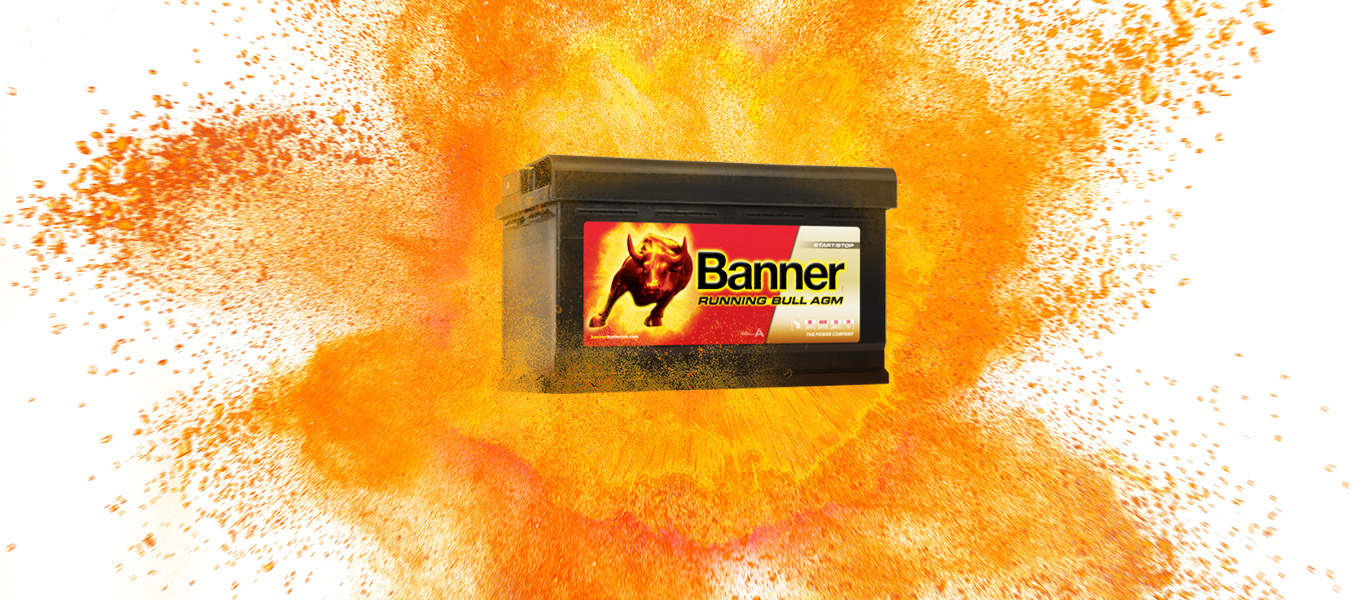
THE 5 FAQ
AND THE ANSWERS
– In view of the sensitive electronic components in the vehicle, as a rule starting assistance should only be provided by means of a Banner Booster.
– Starting assistance from vehicle to vehicle can lead to voltage peaks during disconnection, which can damage or even destroy vehicle electronic systems.
– Therefore, it is essential that the following procedure be strictly observed when using starter cables!
– Standardised starter cables (e.g. in accordance with DIN 72 553) should always be used for giving starting assistance.
– Observe the instructions for use of the starter cables.
– Only connect batteries with the same nominal voltage.
– When connecting the terminals, both vehicle engines must be switched off!
First connect the two positive terminals 1 with 2. Then connect the negative terminal of the assisting vehicle 3 with 4, the blank metallic point on the vehicle needing assistance, away from the battery. (Observe the instructions of the vehicle manufacturer.)
– Now start the vehicle needing assistance for a maximum of 15 seconds. Do not start the assisting vehicle.
– When disconnecting the terminals, remove the cables in the reverse sequence to the above.
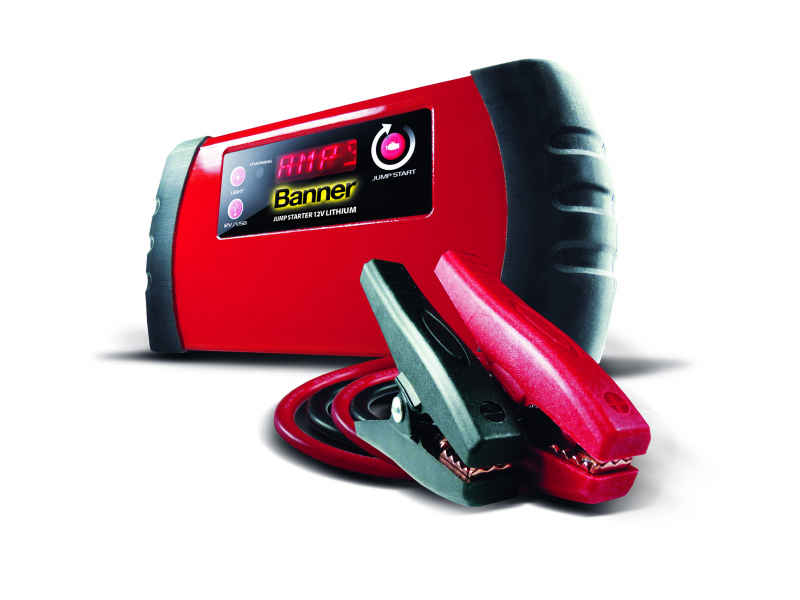
In order to ensure maximum battery life, the following instructions should be followed:
– Keep the surfaces of the battery clean and dry.
– Check the acid levels regularly and if necessary top up with desalinated or distilled water. Never top up with acid. If a substantial water loss occurs, an expert should check the voltage regulator.
– Do not put so-called additives into the battery acid.
– The level of charge of the battery can be checked by means of acid density or open circuit voltage measurement If the density of the acid is below 1.24 or 12,50V kg/l the battery must be recharged .
- In case of saisonal driven vehicles we recommend an external charging twice a year.
In either case the battery must be fully charged before taking out of service.
Running Bull AGM/BackUp: the charge status can only be determined via the off-load voltage. The battery is to be recharged in the case of off-load voltage of ≤12.50V. Acid density measurement, or topping up with distilled water, is not possible - it destroys the battery.
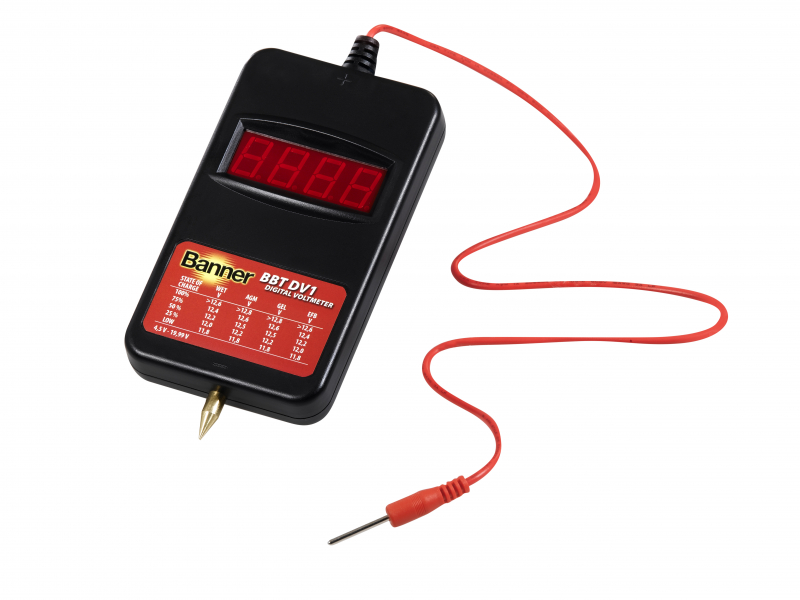
– Before charging a wet battery, check the electrolyte level and top up if necessary with de-ionised or distilled water to the maximum acid level mark, or 15mm above the upper edge of the plates.
Should the battery be removed prior to recharging in order to prevent damage to the vehicle?
Please note the charger type. The operating instructions of the vehicle or the charger manufacturer frequently contain valuable tips regarding battery charging in the vehicle.
In general, a fully automatic charger (charging voltage limitation of 14.8V) is well suited to the charging of a battery installed in a vehicle.
Should your charger have an automatic mode with voltages >15.9V, it is vital that the battery be separated from the in-board electronics and removed from the vehicle.
In a worst case scenario it is possible that the installed control devices can be destroyed due to overvoltage and the resulting damage would be enormous. Warning! Follow the vehicle manufacturer’s instructions when disconnecting the terminals.
– Batteries may only be charged with direct current. Connect the positive (+) battery terminal to the positive (+) terminal of the charger, and the negative (-) battery terminal to the negative (-) terminal of the charger.
– Do not switch on the charger until the battery has been disconnected. When charging is completed, switch off the charger before disconnecting the battery.
– It is recommended that the charging current be equal to one tenth of the capacity (e.g. 44Ah divided by 10 = 4.4A charging current).
– The temperature of the acid may not exceed 55°C during charging. If the temperature rises above 55°C, the charging process must be discontinued.
– The fittings must not be opened.
- Ensure that recharging amounts to 1.2 times the consumed capacity (e.g. consumed capacity 30Ah, recharge 36Ah)
– Charging must be performed in a well-ventilated room.
– Charging is finished when the current drops to 0 or stops falling, or if the automatic charger switches off.
For deep discharged flooded batteries we recommend a charging voltage of 16V (separate the battery from the onboard electronics)!
Warning! Oxyhydrogen gas is formed during charging! It is essential that fires, sparks, open flames and smoking be prevented!
Running Bull AGM/BackUp: only recharge with a voltage controlled charger (max. 14.8V)! The use of standard, non-voltage controlled chargers will destroy the battery through overloading and cause the electrolyte to escape!
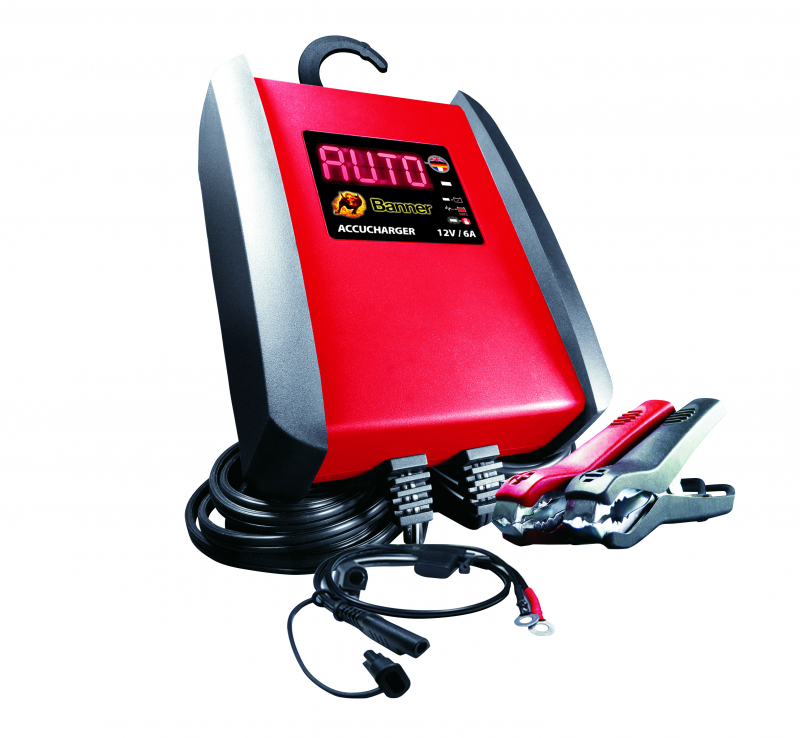
Should the bike not be used or be garaged for a lengthy period (standstills or winter mothballing), remove the battery and store it in a dry and cool place (frost-free). It is essential that the battery be fully charged and gets recharged when reaching 12.50V or connect it to a charge retention device (e.g. Banner Accucharger).
Ideally, you should use a voltage-regulated charger (Banner Accucharger). These devices carry out charging automatically and depending on the battery capacity, you can employ the following chargers:
3-20 Ah - Banner Accucharger 6/12V 2A - Art.No. 1240000020
> 20 Ah - Banner Accucharger 12V 3A - Art.No. 1240000030
- Remove the battery from the vehicle and under all circumstances unclamp the battery cables (minus terminal first). Warning! Without a power supply, in-board computer and radio data, etc. can be lost!
- First connect the charger to the battery and then switch on. Following charging, first switch off the charger and then disconnect it from the battery.
- Charging current: max. 1/10 Amp of the battery capacity.
- Stop charging at an acid temperature of more +55°C.
- After charging, check the electrolyte level and if necessary top up with distilled or de-ionised water (only applies to wet batteries, not to AGM, GEL or AGM PROfessional batteries!).
- Ensure good ventilation when charging. Highly explosive oxyhydrogen gas forms during charging. Therefore, it is vital that smoking, open flames and sparks be prevented.
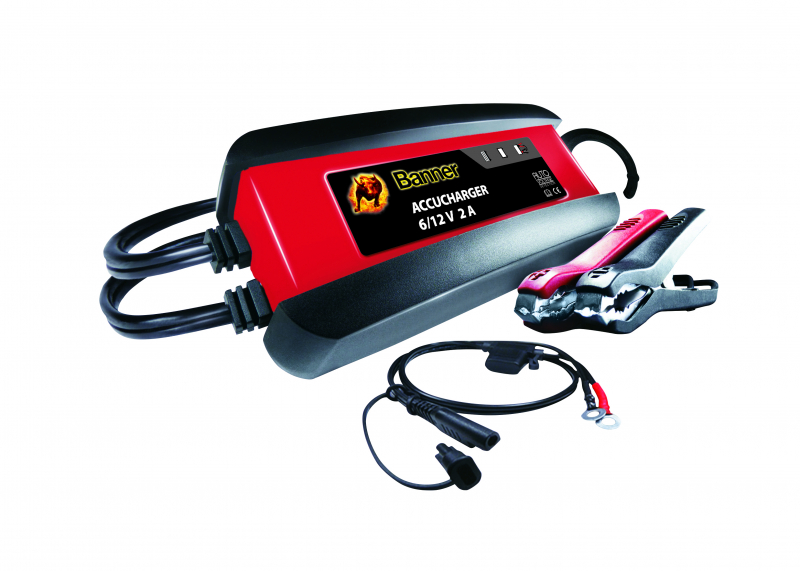
In order to achieve full performance and service life, the battery must be fully charged prior to installation (1. + 2.).
1. Bike Bull
Preparation. The degassing vent is closed and must be opened before putting into operation. Remove the protective cap, or cut off the degassing hose at the end.
Filling. Remove all battery stoppers. Only use special acid (density 1.28 kg/l), which is supplied with the battery in a special plastic container. Fill to the maximum mark and then allow the battery to rest for 30 minutes.
Warning! The acid container with any residual acid should be brought to a hazardous waste collection point. Acid residues may not enter the sewerage system. Empty acid containers should be disposed of as domestic plastic waste.
Commissioning. In order to reach full performance, once the battery has been filled with acid it must be fully charged prior to installation. In accordance with the instructions for use of the charger and the battery, charging can take place for approx. 5-10 hours at a maximum of one-tenth of battery capacity (Ah).
Battery capacity can be ascertained by means of the DIN number on the individual box. Numbers 2 and 3, e.g. 509 14 have 9 Ah capacity and therefore require charging current of approx. 0.9 A. After charging, the acid level should be checked and if necessary topped up with demineralised water. The battery can then be closed with the stoppers.
Maintenance. Never allow the acid to fall below the minimum level. Only use demineralised water (desalinated or distilled water according to VDE 0510).
Please note! The Bike Bull cannot be installed in a lateral position!
2. Bike Bull AGM
Preparation. Remove the battery seal shortly before filling. A slight hissing sound can be heard.
Filling. Only use special acid (density 1.32 kg/l), which is supplied with the battery in a special plastic container. Then allow the battery to rest for 30 minutes. After filling, the battery is closed with the stopper strip and may not be reopened, as this would destroy the battery! Warning! The acid container with any residual acid should be brought to a hazardous waste collection point. Acid residues may not enter the sewerage system. Empty acid containers should be disposed of as domestic plastic waste.
Commissioning. In order to reach full performance, once the battery has been filled with acid it must be fully charged prior to installation. In accordance with the instructions for use of the charger and the battery, charging can take place for approx. 5-10 hours at a maximum of one-tenth of battery capacity (Ah). Battery capacity can be ascertained by means of the DIN number on the individual box. Numbers 2 and 3, e.g. 518 21 have 18 Ah capacity and therefore require charging current of approx. 1.8 A.
Please note! The Bike Bull AGM cannot be installed in a lateral position!
3. Bike Bull GEL, AGM PROfessional
Putting into operation. The battery is fully charged and ready for install.
Please note: The Bike Bull GEL / Bike Bull AGM PROfessional can be installed in a lateral position!
Use of a voltage controlled Banner Accucharger 6/12V 2A or 12V 3A is recommended.
Warning! Never install a maintenance-free battery (AGM, GEL, AGM PROfessional) in a motorcycle without a regulator, as the maximum voltage may not exceed 14.8 V.


